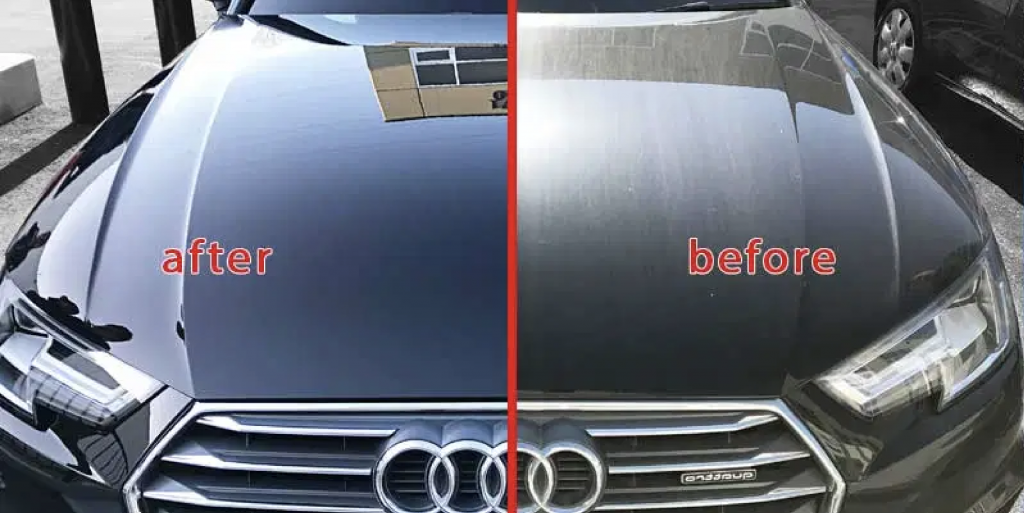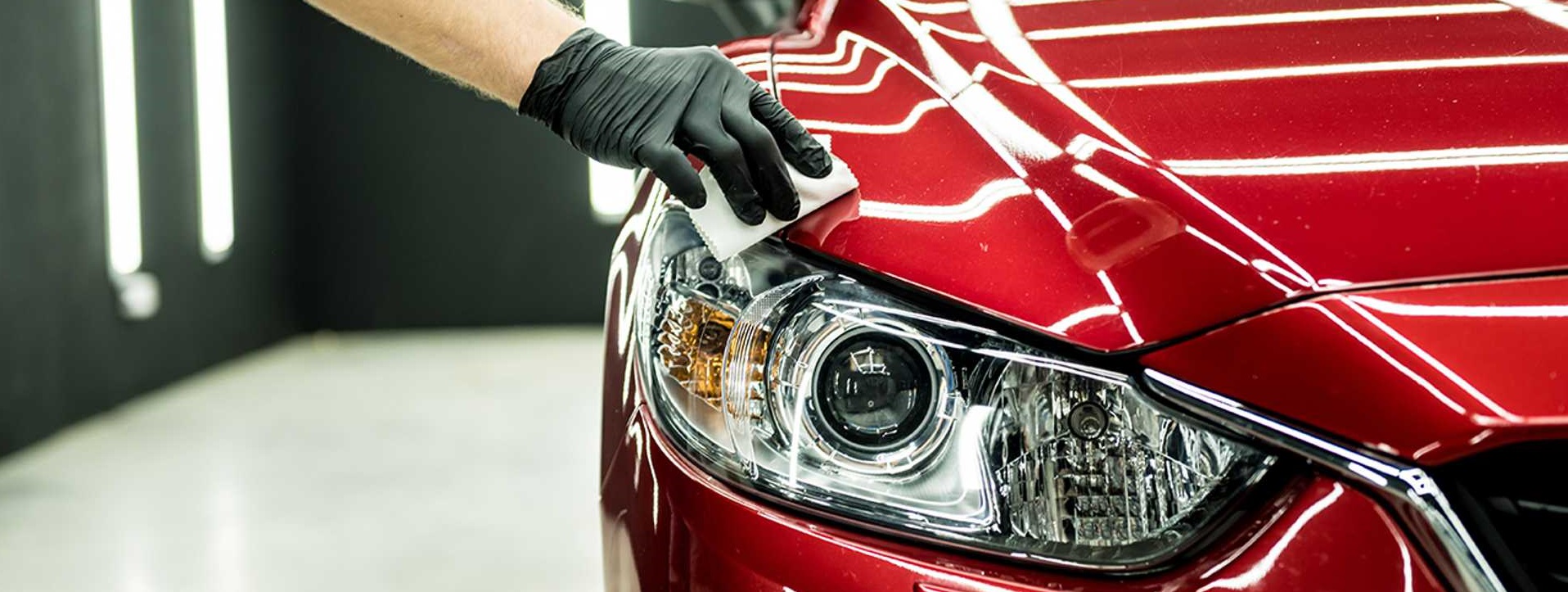Best practices for maintaining your car after getting ceramic coating.
Best practices for maintaining your car after getting ceramic coating.
Blog Article
Just How Ceramic Covering Protects Your Vehicle's Paint and Keeps It Looking New
Ceramic finish has arised as a noticeable remedy for vehicle paint security, providing a robust defense against a selection of ecological risks. By creating a semi-permanent bond with the lorry's surface area, it successfully secures tiny imperfections and gives a shield against oxidation, dust, and UV damages. This not just preserves the visual allure of the automobile yet additionally simplifies maintenance regimens. The ins and outs of just how this modern technology operates and its benefits over typical approaches necessitate a closer examination, revealing engaging reasons to consider this ingenious strategy for your automobile.
What Is Ceramic Finish?
Ceramic finishing is regularly pertained to as a revolutionary improvement in vehicle paint defense. ceramic coating. This advanced product is a fluid polymer that chemically bonds with the vehicle's manufacturing facility paint, developing a protective layer that improves resilience and visual appeal. Unlike standard wax or sealants, which supply only momentary protection, ceramic layers provide lasting results, commonly spanning a number of years with proper upkeep
The main parts of ceramic finishes are silicon dioxide (SiO2) and titanium dioxide (TiO2), which add to their hydrophobic properties. This hydrophobic nature permits water to bead and roll off the surface area, successfully avoiding impurities like dirt, crud, and bird droppings from adhering to the paint. Subsequently, cars treated with ceramic layers need less frequent washing and are easier to preserve.
Furthermore, ceramic layers offer UV defense, which helps avoid oxidation and fading of the paint as a result of sun direct exposure. This element not just maintains the cars and truck's aesthetic appeal however additionally contributes to its resale value gradually. On the whole, ceramic coatings represent a substantial leap onward in the realm of automotive treatment, offering a robust remedy for vehicle owners seeking to preserve their financial investment.
Just How Ceramic Covering Works
Ceramic covering is composed of a fluid polymer that chemically bonds with the manufacturing facility paint of a vehicle (ceramic coating). The primary element of ceramic coatings is silica dioxide (SiO ₂), which provides premium hardness and strength versus scrapes, UV rays, and other outside contaminants.
When applied appropriately, the layer passes through the tiny pores of the paint surface area, producing a semi-permanent bond. This results in a smooth, shiny coating that improves the car's aesthetic allure while all at once driving away water, dust, and crud. The hydrophobic nature of the finish makes sure that contaminants glide off conveniently, decreasing the frequency of cleaning and the chance of scrapes during cleansing.

Benefits of Ceramic Covering
The application of ceramic finishing provides various advantages that significantly improve the protection and appearance of a lorry's paint. Among the key advantages is its capacity to create a durable, hydrophobic layer that repels water, dirt, and other contaminants. This home not only keeps the surface area cleaner for longer periods however also makes cleaning the lorry less complicated and much less labor-intensive.
Furthermore, ceramic finishings offer superior defense versus damaging UV rays, which can result in oxidation and fading over time. ceramic coating. This UV resistance aids keep the original shade and gloss of the car's paint, thereby preserving its aesthetic appeal for several years
Moreover, ceramic finishings are chemically resistant, using protection versus acidic pollutants such as bird droppings, tree sap, and road gunk. This resistance helps protect against etching and staining, which can compromise the stability of the paint.
Lastly, the longevity of ceramic finishes extends past traditional waxes and sealers, typically long lasting numerous years with appropriate upkeep. This lasting defense ultimately equates right into expense financial savings, as automobile owners can minimize the regularity of reapplication and maintenance initiatives. Overall, ceramic finishings stand for a significant financial investment in lorry treatment.
Comparing Ceramic Finish to Traditional Techniques
Usually overlooked in the mission for optimum vehicle protection, the contrast in between ceramic finishing and typical methods such as waxing and sealants exposes substantial differences in resilience, efficiency, and upkeep. Typical waxes generally give a short-lived safety layer, usually next lasting just description a few weeks to a number of months, while sealants can extend this duration to a number of months. In comparison, ceramic coatings offer a robust, lasting shield that can withstand for a number of years when appropriately applied.
In terms of performance, ceramic coverings display remarkable hydrophobic buildings, effectively repelling water and contaminants, which prevents dirt and grime from adhering to the surface. This home not only enhances the vehicle's look yet likewise simplifies the cleaning procedure. Traditional waxes and sealants, while they might supply some water resistance, do not match the degree of security provided by ceramic coverings.
The upkeep regimen for both choices splits considerably. While conventional techniques need frequent reapplication and maintenance, ceramic finishes are created to endure the rigors of day-to-day driving with very little treatment, making them a more efficient selection for cars and truck enthusiasts looking for long-lasting protection. Inevitably, the option between ceramic finish and conventional methods depends upon the preferred level of security and maintenance dedication.
Maintenance Tips for Porcelain Coated Cars
Preserving a ceramic layered car needs a critical approach to make sure the long life of the protective layer. Use a pH-neutral hair shampoo and microfiber clean mitts to avoid scraping the coating while efficiently eliminating dust and impurities.
Additionally, avoid automatic cars and truck cleans that utilize brushes, as these can compromise the stability of the ceramic finish. Rather, go with a touchless wash or a hand wash. After washing, drying is vital; utilize a top quality microfiber towel to avoid water areas.
Using a ceramic-specific upkeep spray can improve the finish's hydrophobic properties and add an extra layer of protection. This should be done occasionally, relying on your driving problems.

Final Thought
In final thought, ceramic layer serves as an efficient safety step for vehicle paint, offering a resilient obstacle versus environmental damage and enhancing the automobile's visual appeal. Embracing ceramic layer technology can substantially expand the life-span of a car's exterior, guaranteeing it remains aesthetically enticing and well-protected.
Report this page